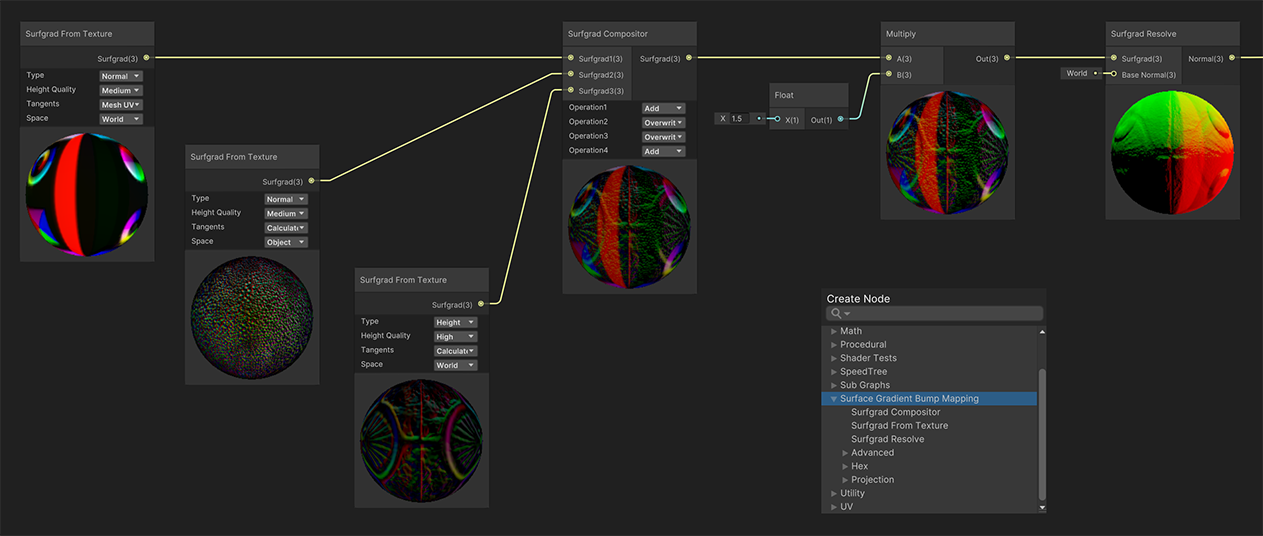About Surface Gradient Bump Mapping
Surface Gradient Bump Mapping is a framework for the layering and compositing of bump maps in Shader Graph.
This package provides a universal and cohesive approach to stacking bump contributions with support for multiple formats and UV sets.

Features
This package contains Shader Graph subgraphs providing the following functionality:
- Accurate order-independent bump map compositing
- Supports any bump format - normal (tangent or object space), height and procedural
- Supports multiple UV sets
- Supports deformable geometry and tessellation
- Planar and Triplanar projected bump mapping
- Hex-tiled bump mapping

This implementation is based on the paper Surface Gradient–Based Bump Mapping Framework.
Note
This package is available as an experimental package, so it's not ready for production use. The features and documentation in this package might change before it's verified for release.
Installation
To install this package, see the Unity Package Manager's Adding and removing section in the Unity User Manual.
- Go to Window > Package Manager.
- Press the + button and select "Add package by name…"
- Enter com.unity.surface-gradient-bump-mapping and press Add.
Requirements
This package is compatible with the following versions of the Unity Editor:
- 2022.1 and later (recommended), it is compatible with both HDRP and URP.
Using Surface Gradient Bump Mapping
Surface Gradient Bump Mapping Samples on the Unity Asset Store is a collection of interactive tutorial samples demonstrating the concepts and workflow of Surface Gradient Bump Mapping for Shader Graph and HDRP.
For an introduction to using the framework, see Surface Gradient Workflow.
Note
To avoid normal space discrepancies, set the Fragment Normal Space to World.
For reference on the individual Subgraphs see the Subgraphs section.